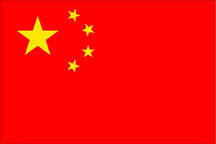
Chinas rapidly growing economy is shifting the center of global economic gravity from Europe to Asia, providing the United States with both opportunities and challenges – especially in the areas of job loss and trade deficit – according to University of Notre Dame economist Nelson Mark.
<?xml:namespace prefix = st1 ns = “urn:schemas-microsoft-com:office:smarttags” />Chinas economic growth pattern looks like whatJapans did back in the50s and60s,said Mark, who specializes in international asset pricing and exchange rate economics.Modernization and industrialization are driven primarily by high savings rates and investment to catch up with the West. This presents international trading opportunities forU.S.firms in information technology, banking and finance, and even in manufacturing – as with General Motorsjoint venture inChina. As bothChinaandIndiagrow, theyll have higher incomes and will want to buy more from theU.S.This is all good.
The lesson here is that if you put in place the right policies to give people incentives to direct capital and labor in productive activities, you can create a vibrant and dynamic economy that is lifting millions of Chinese out of poverty.
The changing landscape of global economics will be a sub-theme Jan. 25 to 29 at the World Economic Forum inDavos,Switzerland, where world economists will explore the emergence ofChinaandIndiaas economic powers and examine the implications for other countries.
The loss of millions ofU.S.manufacturing jobs to low-wage countries likeChinaand a soaringU.S.trade deficit with that country are two serious issues resulting fromChinas new economic status – challenges that Mark believes can be dealt with domestically.
The job loss part is inevitable for inefficient and declining industries, like textiles manufacturing,said Mark, the Alfred C. DeCrane Jr. Professor of International Economics.The right policy in theU.S.is to subsidize the transition for displaced resources into new activities that have a future.
As to the current account deficit,Chinais not to blame. This problem comes from within. It is a problem of an impatientU.S., both in the private and public sectors, that has been on a spending binge. Recent data show that theU.S.national saving rate is in the 1 to 2 percent range.
Nelson Mark is available for interviews and can be reached at 574-631-0518 or nmark@nd.edu .<?xml:namespace prefix = o ns = “urn:schemas-microsoft-com:office:office” />
TopicID: 15222